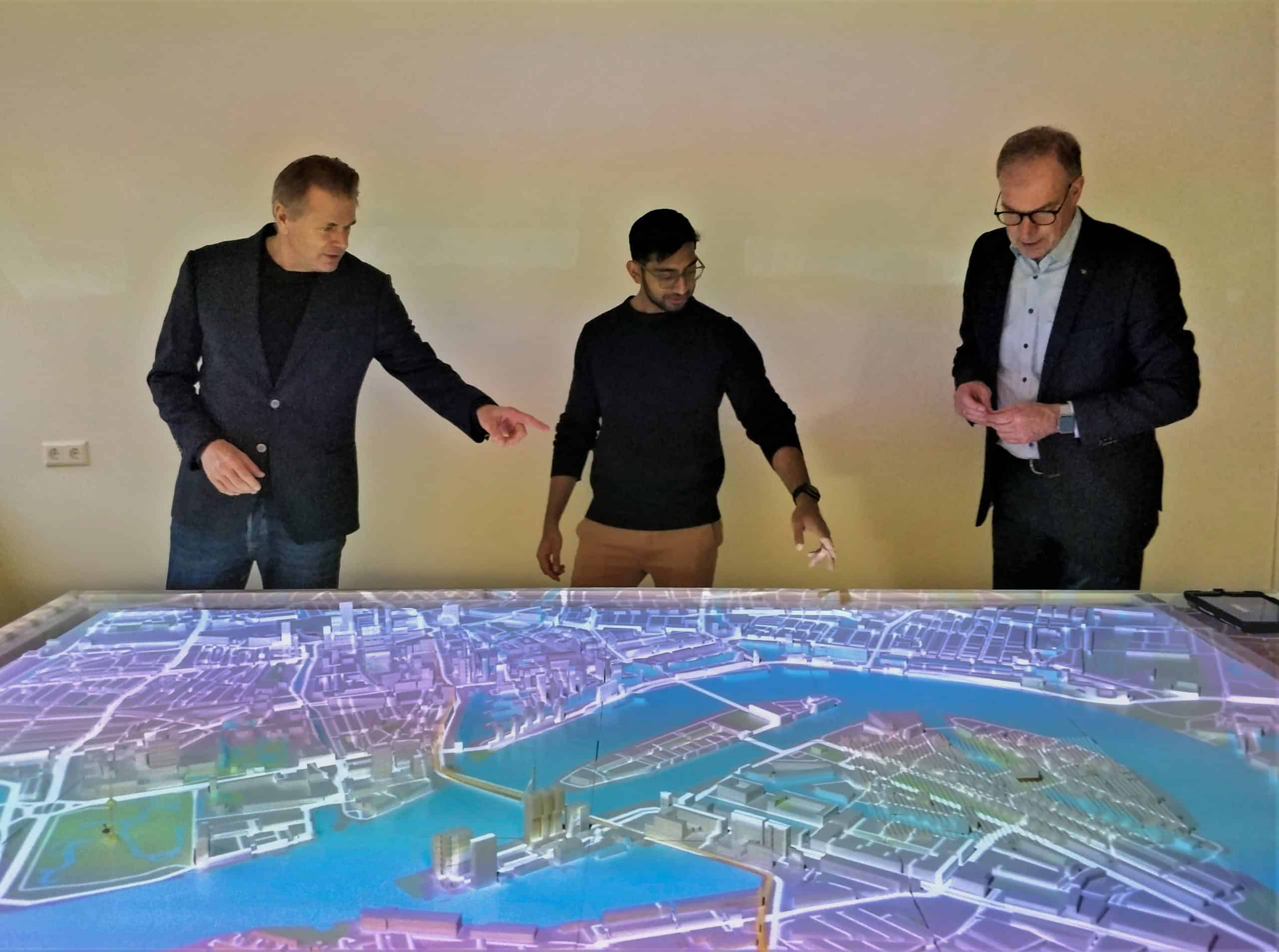In the Smart Campus Project, real-life data will be used to make campus Woudestein more livable and sustainable. Sensors are placed at various locations on the campus to collect data on air pollution, indoor climate, people flow, and heat distribution. In combination with other data from campus users, issues relating to the use of buildings, energy consumption, travel behavior, signposting, and health will be addressed and tackled.
The project started in February 2022 and will run for two years. Erasmus Real Estate & Facilities (RE&F) has taken the lead together with the Erasmus Centre for Data Analytics (ECDA). Partners in the project include Erasmus Enterprise, YesDelft! and the Municipality of Rotterdam, and several supporting partners. In addition to the goal of improving our study and working environment and wellbeing of campus users, the project serves as a learning tool for students, a prototyping platform for RE&F, a tool for research, and a collaboration platform with external parties.
Dr. Marcel van Oosterhout, associate executive director ECDA stated “The smart campus project provides us the opportunity to create an environment for experimentation and learning, where we can explore the value of using data, analytics and visualization to improve the triple bottom line (wellbeing, sustainability, and prosperity). ECDA will connect the project to several of its partners, involve Faculty to conduct experimental research projects, and guide student teams to work on several related challenges”.
Wellbeing, sustainability, and user behavior
A multidisciplinary team of four students from Erasmus University Rotterdam and TU Delft will be working on challenges in sprints of five months each. Questions are asked such as:
- How can we use data to assess and improve wellbeing of campus users? And relate it to data from sensors, to derive insights on indoor climate, crowdedness, safety etcetera
- How can we use data to find the right rooms and optimize the use of our facilities on campus?
- How can we use data to optimize the use of (renewable) energy and reduce our energy consumption?
- What visualization methods work best to communicate insights with our stakeholder groups and how do these impact their behavior?
- How can we ensure that key values such as ethics, personal privacy and accountability are incorporated into the design of the smart campus?
3D model of the campus
To make this possible, a series of tangible and digital platforms are being set up. These include a 3D model of the campus and an online prototyping environment. Layering data on a 3D model of the campus allows the project to be communicated to the users of the campus and the RE&F team to make simulations of possible changes. It also facilitates evidence-based decision-making about future changes, for example in routing, facilities, and overall liveability. The 3D model will be housed in the Erasmus Data Collaboratory in Polak Building.
A vision for the future Smart Campus
Ultimately, the project should result in a vision for the future Smart Campus, and the associated collaboration agreements and funding. The learning experiences from this project will also be shared with other (university) campuses, partners, and other relevant stakeholder groups.
Bas Boorsma, Chief Digital Officer of the City of Rotterdam:“Digitalization is a Force for Good if it contributes to the wellbeing of the citizens in our cities. Given the pandemic experience, public health is top of mind. The Municipality of Rotterdam is, therefore, both pleased and proud to contribute to the smart campus work Erasmus is executing on, by means of the advanced air quality sensing project we have jointly engaged on.”
Marco Roodenburg, Head of Asset Management at Real Estate & Facilities said “Collaboration with research and education is for us as critical as it is inspiring. The expectations of a data-driven ‘Smart Campus’ will rise in the years to come. We believe we can match these expectations if we collaborate intensively on this subject. Not only within professional services but also with the people for whom we do our work every day. We are looking forward to adding concrete value to our services, our transparency, and the sustainable development goals, all in accordance with our Erasmian Values.”

